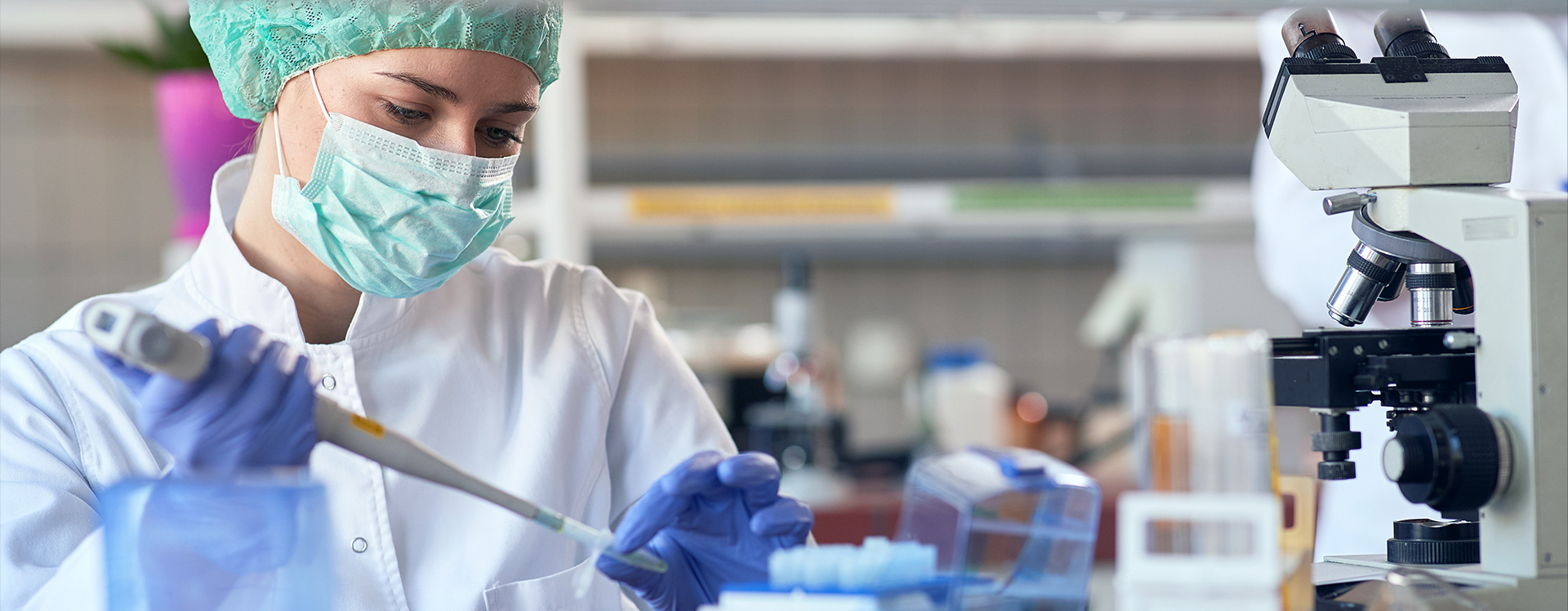Disease pandemics are well documented throughout human history. The bubonic plague, cholera, smallpox, and influenza have all produced pandemics that devastated world populations. As of March 2020, COVID-19 has been affecting our daily lives in the U.S., but scientists have the tools and technology to address this pandemic better than pandemics of the past. These biotechnological innovations can lead to fewer infections, less-severe illness, and a decreased mortality rate.
Pandemics of Past, Present, and Future
Pandemics have the capacity to emerge suddenly due to animal reservoirs that share many diseases with humans. Pathogenic microorganisms normally live and multiply in animal hosts and are able to jump to humans if given the opportunity. These microorganisms are also able to change their virulence—ability to cause disease—based on the properties of their host and environment.
As the world becomes more populated, humans are more likely to venture into places that were once considered remote. Practices such as road building, mining, hunting, and logging bring humans in closer contact with animals with which they wouldn’t otherwise interact. But, exotic animals are not the only animals that serve as reservoirs of disease. Domesticated farm animals, such as chickens and pigs, also share viral diseases with humans.
When viruses have multiple animal reservoirs, they undergo reassortment—exchanging genetic information and shuffling genes, potentially leading to greater virulence. The 2009 pandemic of influenza A H1N1, a swine flu, caused 12,469 deaths in the United States. Additionally, influenza A H5N1, an avian flu, is on the rise in farmed-raised poultry, but its spread is currently limited through vaccination efforts. Left unchecked, influenza A H5N1 has the potential to cause widespread disease in humans and has shown to have a high mortality rate in children and young adults. With the COVID-19 pandemic, the SARS-CoV-2 virus that causes the disease also shows evidence of genetic exchange. The virus appears to be the result of a recombination between bat and pangolin coronaviruses.
Biotechnology and the Fight Against Disease
Scientists are looking at ways to both prevent the spread of COVID-19 and to treat those who are infected. Advancements in the field of biotechnology have allowed scientists to develop vaccines quickly and to rapidly screen for promising treatments for COVID-19.
As I write this in April 2020, there are 49 new vaccines in development with the anticipation that one or more will be available within the next year. Many different treatment options are also being explored, ranging from antibody-based therapies, antivirals, cell-based therapies, and RNA-based treatments. Additionally, available drugs used to treat other diseases are being investigated for their potential efficacy against COVID-19. A current list of vaccines and treatments in the research pipeline is available from the Milken Institute.
Learning more about the spread of COVID-19 is also a priority. Scientists are able to track genetic changes in the SARS-CoV-2 virus as it moves through different geographic areas. SARS-CoV-2 is an RNA virus, composed primarily of a single strand of genetic material within a protein coat enveloped in a fatty membrane. RNA viruses tend to have fairly high mutation rates. As the virus enters a new region, these mutations are carried along in its genome, essentially providing a historical record of where it came from. Phylogenetic trees are constructed to show genetic relatedness among the samples and this information is displayed in real time as results are generated. Scientists with adequate experience and training in bioinformatics are able to gather data about COVID-19 and influence its impact on the world population.
Learn more about our 100% online degree and certificate programs.![]()
Get Program Guide
A Biotechnology Degree that Makes a Difference
The University of Wisconsin MS in Applied Biotechnology program prepares students to enter or advance in the biotechnology workforce in order to contribute to efforts such as these. The program’s curriculum was developed with input from biotechnology leaders, focusing on the knowledge and skills required to be successful in the areas of research and development, quality assurance and compliance, and business management. Courses may include:
- ABT 740: Regulatory Compliance and Regulation. Students learn the documentation and practices necessary for testing investigational new drugs.
- ABT 760: Quality and Project Management. Students learn how to manage a biotechnology project from start to finish through the phases of conceptualization, planning, execution, and closing.
- ABT 775: Tools for Data Analysis. Students learn to analyze and interpret large data sets, such as genomic data, to solve biological problems.
Learn more about the University of Wisconsin MS in Applied Biotechnology program by reaching out to a knowledgeable enrollment adviser at 608-800-6762 or learn@uwex.wisconsin.edu.
 About the author: Dr. Melinda Verdone is the former program manager for the 100% online University of Wisconsin MS in Applied Biotechnology program. She earned her M.S. in Microbiology and her Ed.D. in Higher Education and has more than 20 years of biotechnology experience working in research and development and higher education.
About the author: Dr. Melinda Verdone is the former program manager for the 100% online University of Wisconsin MS in Applied Biotechnology program. She earned her M.S. in Microbiology and her Ed.D. in Higher Education and has more than 20 years of biotechnology experience working in research and development and higher education.










